A Guide to Backyard Bird Feeders: Food, Placement & More
Cary, NC — Are you interested in attracting birds to your backyard? Many people improve their odds by providing seed or other foods that common birds find desirable. But where does one start and what are the choices?
Feeder Choice & Beginner Seed
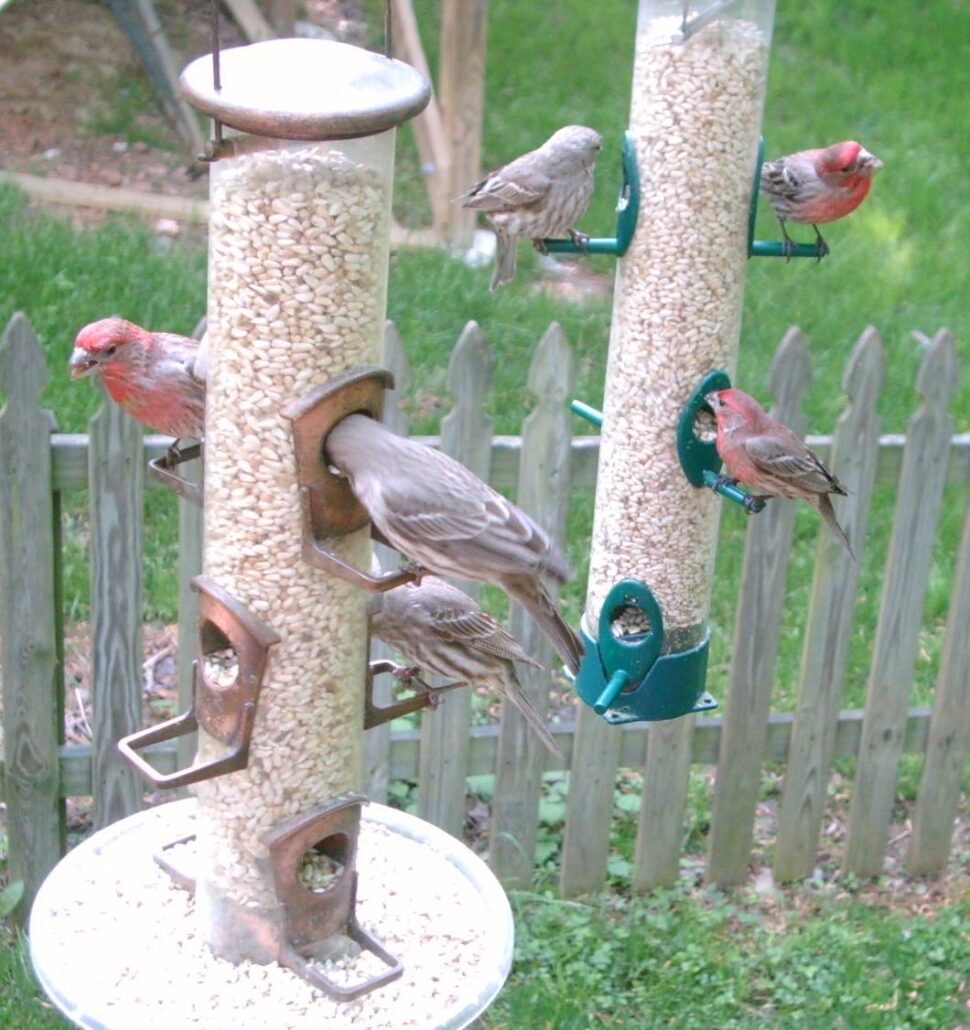
When we think of feeding birds we mentally fix on seed, and indeed “birdseed” is an effective attractant for many kinds of backyard birds. Retailers such as bird supply shops, garden centers, and many grocery stores offer a wide range of choices and mixes.
My advice for the beginner is to use black oil sunflower seed by itself. The choice of feeder is yours, including tubes, trays, and hoppers. Birds that enjoy sunflower seeds include American Goldfinches, Northern Cardinals, White-Breasted and Brown-Headed Nuthatches, Tufted Titmice, and Carolina Chickadees.
Where in the Yard to Put the Feeder
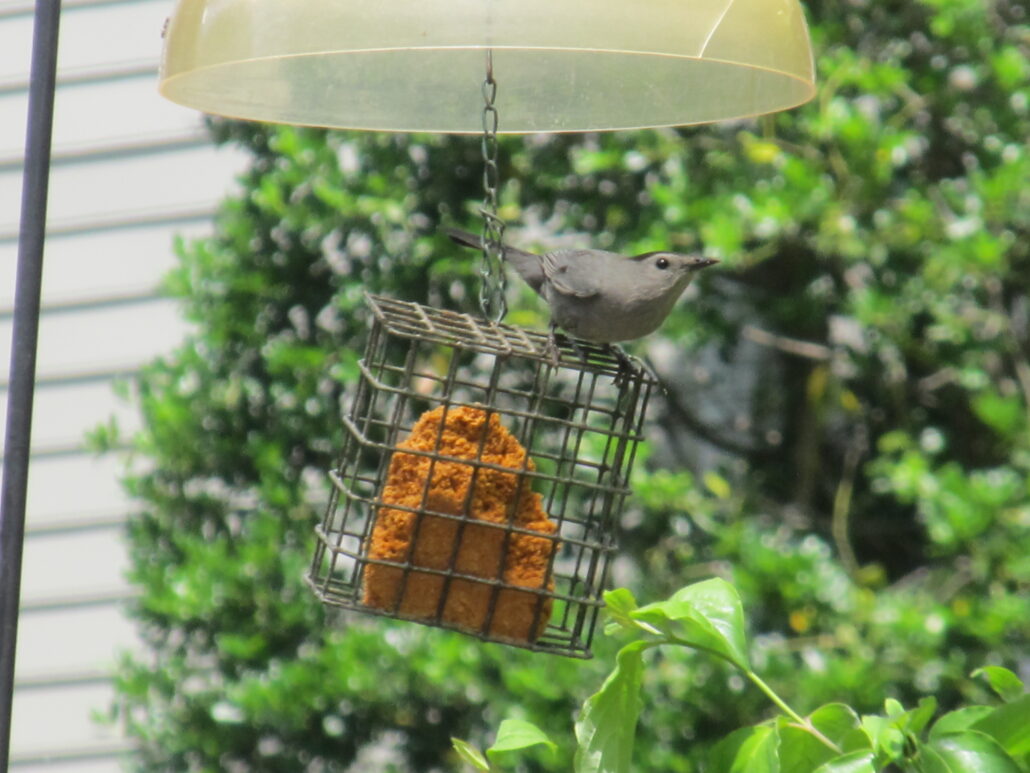
Feeder placement is critical to keep birds safe from predators and feeders safe from nuisances like squirrels. The most effective arrangement I have found is to suspend a feeder from support like a shepherd’s hook, covered by an anti-predator baffle, and about four feet from a tree or shrub to be close to cover but not too close to welcome ambush predators (cats, say.) Feeders should be cleaned regularly with a mild bleach solution to keep mold and diseases at bay.
The “Squirrel Proof” Myth
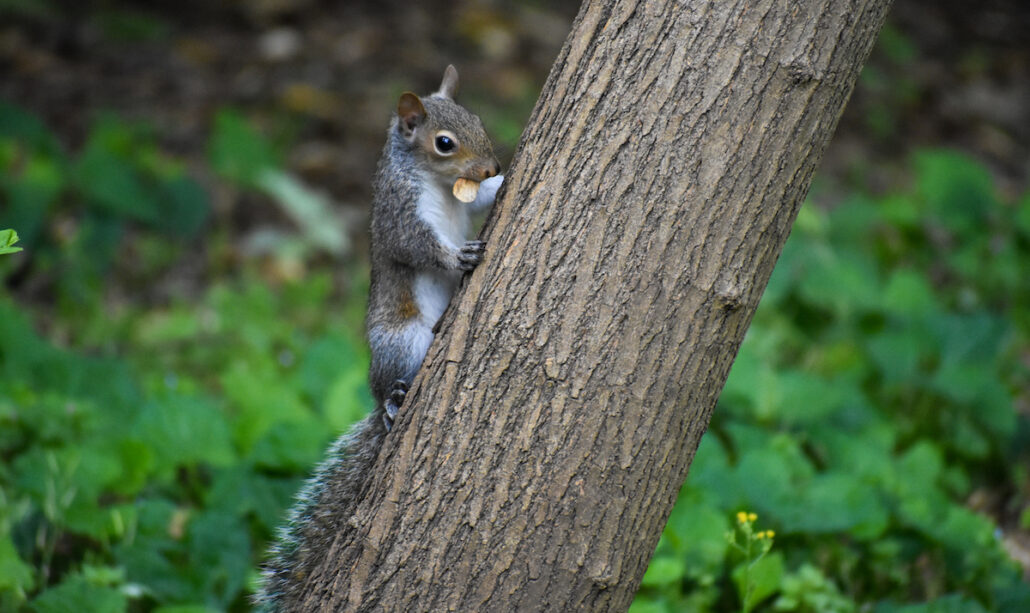
There is a good deal of argument about so-called squirrel-proof feeders. I am one who believes these are a myth. Squirrels have a great deal of time on their hands and are persistent and have defeated many types of feeders that their designers claimed to keep squirrels out.
All one can reasonably do is make it difficult as possible (using baffles) and accept that squirrels are a cost of doing business. I might also suggest offering safflower seed if squirrels are a difficulty. These seeds are bitter-tasting to squirrels but welcomed by many kinds of birds—especially Cardinals. On the other hand, they are more expensive.
For More Variety, the Secret is Suet

Not all birds are seed eaters. In fact, most backyard birds eschew seeds in favor of protein-rich foods such as insects. The strategy to attract such birds is to provide suet. Prepared and inexpensive suet cakes or nuggets are easy to find at any retailer selling bird supplies.
You will want to serve them up in a hanging basket. Keep in mind that suet can be immensely attractive to squirrels so be sure to use baffles that thwart the pesky rodents or buy hot-pepper formula suet that in most cases discourages them. Birds that respond to suet include woodpeckers, Eastern Bluebirds, American Robins, Pine Warblers and Brown Thrashers.
You should find that a much wider variety of backyard birds find suet appealing than even seed.
Beyond the Basics — Mealworms, Fruit and Peanut Butter
Beyond suet and seeds, other foods can be used to attract birds. Providing them is just a question of budget and willingness to keep feeders clean and filled.
Among these are mealworms (of interest to bluebirds), fruit halves (for orioles), thistle or nyjer seed (for goldfinches) and peanut butter (for nuthatches). I do not use any of these because dollar-for-dollar sunflower seed and suet by themselves are quite effective at attracting dozens of species of birds.
Do birds need seed or suet in summer? In short, no. But they will always be welcomed as part of the resources backyard birds seek out and will draw birds so that you can view them.
At-Home Hummingbird Nectar
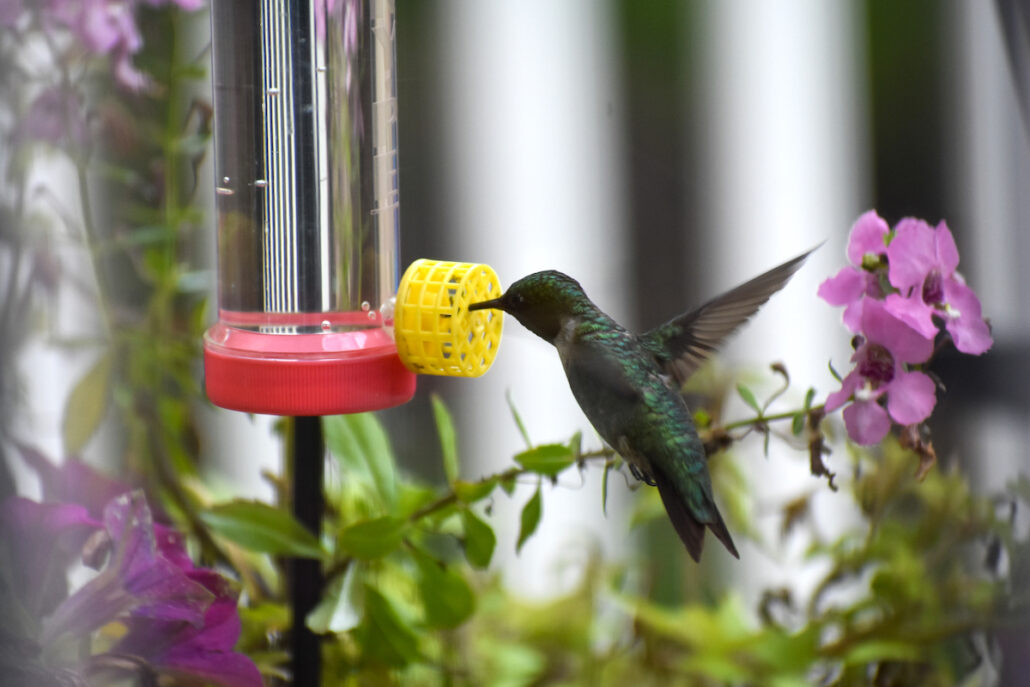
There is one last class of food you may want to consider for summer use: nectar that attracts hummingbirds. This is easy to make at home by adding white sugar to boiling water on a 1:4 ratio and cooling to room temperature.
If you do this, please do not add harmful food coloring to the nectar! Also, choose a nectar feeder that is easy to clean and you will be sure to have hummingbird visitors. Clean the feeder every few days and more often in hot weather.
With a simple seed and/or suet choice, with feeders that are easy to clean, and where feeders are placed properly, one can attract and enjoy the side of many bird species. If you are not already doing so, consider becoming a bird feeder. You will thoroughly relish the results!
Story by David Lindquist. Photos by Ashley Kairis and Lindquist.
All the Cary news for the informed Cary citizen. Subscribe by email.

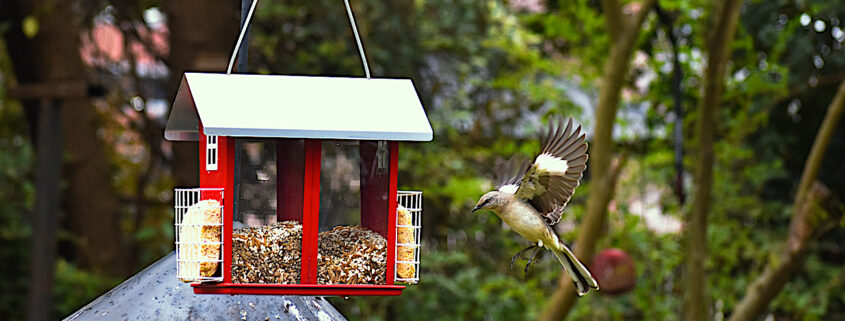


C&S Peanut Delight No-melt Suet Dough is a hit with many birds!